
Why Ontario is experiencing more floods — and what we can do about it
How can we limit damage from disasters like the 2024 Toronto floods? In this explainer...
In 2016, the Alberta government set itself an ambitious target to help wean the province off its reliance on fossil fuels for electricity.
The Renewable Electricity Act called for 30 per cent of all electricity produced in the province to come from renewables by 2030. For a grid like Alberta’s, which was still heavily reliant on coal, the target was significant.
Six years later, and still riding the momentum created by the 30 per cent target and previous government policies to support it, the province is on track to meet — or exceed — the goal and is close to surpassing an interim target calling for 15 per cent of electricity produced in Alberta to come from power sources such as wind and solar in 2022.
In 2017, coal was still providing 59 per cent of all electrical energy consumed in the province and renewables were responsible for 10 per cent, according to data from the Alberta Electric System Operator, the non-profit organization that operates the provincial power grid. Now, coal is set to be phased out entirely by 2023 — with many plants converting to natural gas — and renewables are surging.
Citing recent research, Evan Wilson, senior director for Western Canada with the Canadian Renewable Energy Association, says about 18 per cent of Alberta’s electricity is now coming from renewables.
“We are well on our way towards the 30 per cent target,” he says.
The 30-by-30 target was part of a suite of climate policies brought in by the previous NDP government in Alberta, including an increased carbon price, incentives for businesses and homeowners to improve efficiency and a renewable electricity program that offered stability and certainty for those willing to build renewable energy projects at the lowest cost. In Alberta, renewables largely refer to wind and solar, but can include hydro, geothermal and biomass.
According to the Government of Canada, more than 80 per cent of Canada’s electricity comes from non-emitting sources, primarily due to an abundance of hydropower across the country, but that’s not the case in Alberta and Saskatchewan. The two Prairie provinces had easy access to coal and built their grids accordingly. Both ignored significant wind and solar potential due to the previously higher cost of the technologies.
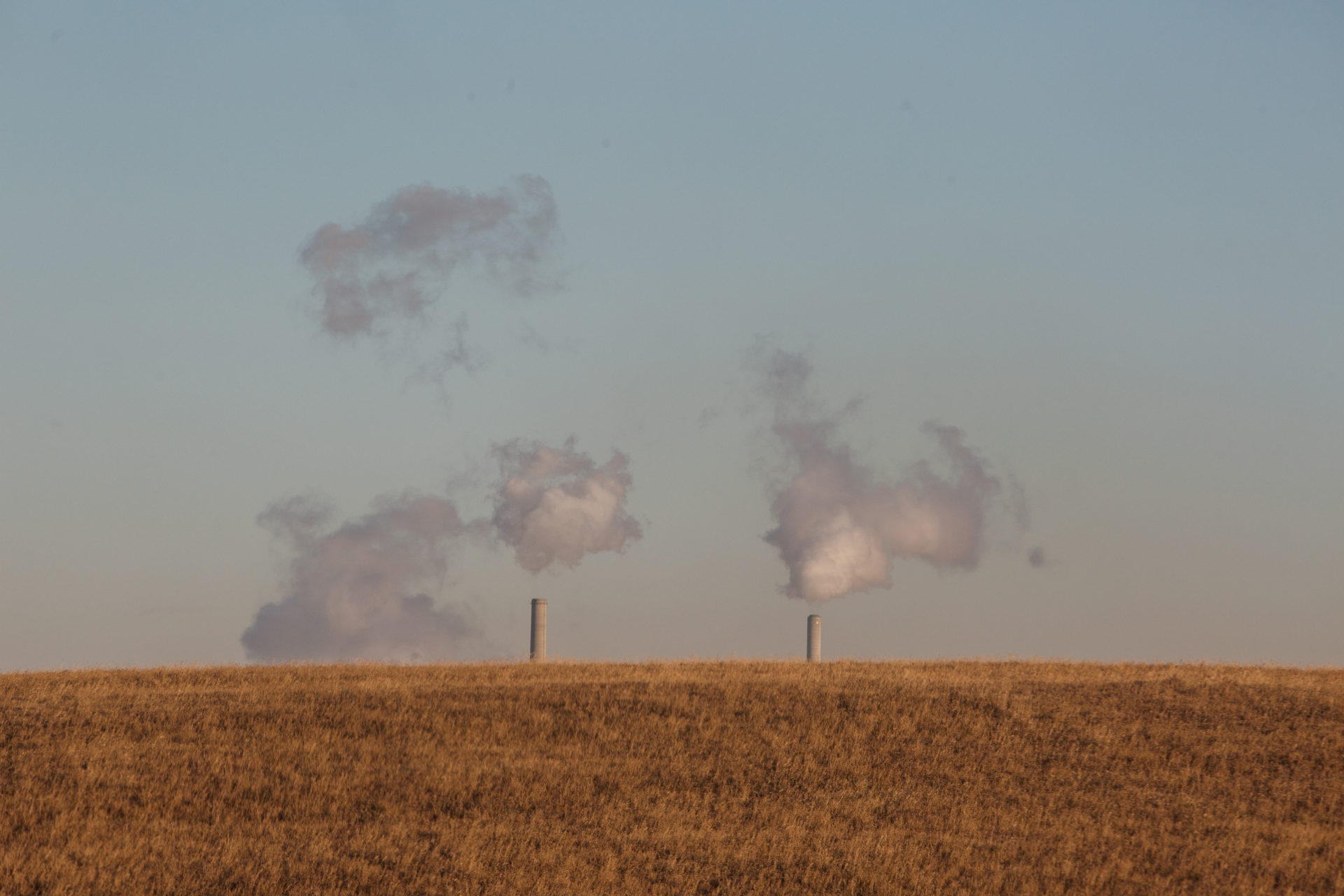
As a result, Alberta had, and has, a long way to go to reduce its emissions compared to other jurisdictions. Areas with abundant hydro, offshore wind or geothermal resources, including Costa Rica and Scotland, have made headlines for nearing 100 per cent renewable electricity generation, while other traditionally coal-dependent areas, including China, are more in step with Alberta.
Globally, the United Nations estimates 29 per cent of electricity is produced using renewables.
Alberta’s program included a series of three auctions where developers competed for government-backed contracts that ensured a base rate of return. This drove a surge of new projects on Alberta’s wind-swept and sun-baked hills and fields.
In total, the auctions increased renewable energy capacity in the province to 4,200 megawatts from 2,828 megawatts — that increase is enough to power over 750,000 homes.
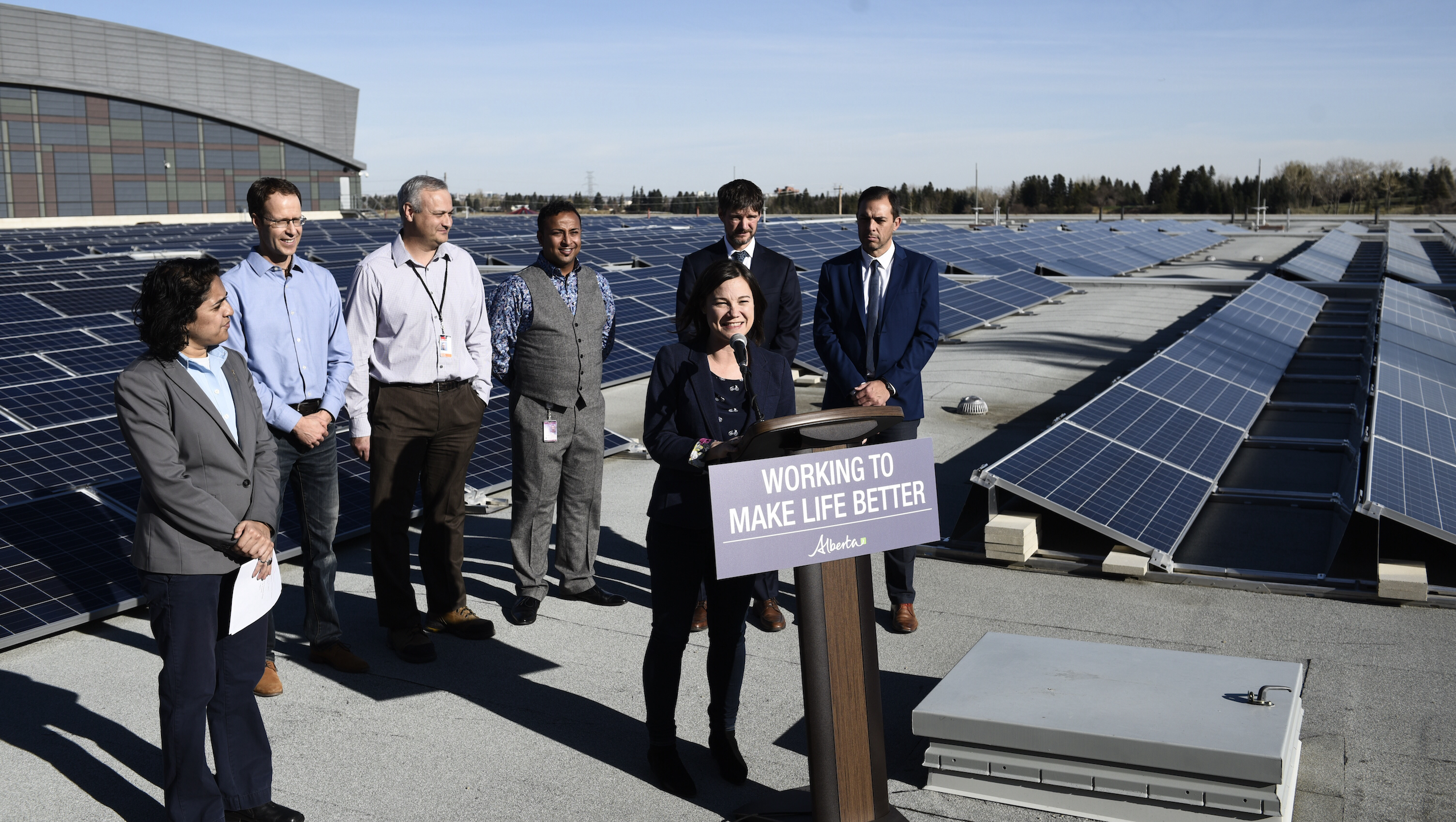
That program was cancelled by the UCP government under former premier Jason Kenney when it took power in 2019. It argued the government was no longer needed in the process.
Private contracts emulating the government-backed guarantees under the program flourished.
Binnu Jeyakumar, the electricity program director for the Pembina Institute, says two gigawatts of renewable energy contracts have been signed between corporations and Alberta producers in the last three years — enough to power roughly 1.5 million homes.
“So from 2019 to the beginning of 2022 is when we got two gigawatts of corporate deals,” she says. “It took Alberta 15 years to build the 1.5 gigawatts of renewables that we had operating in 2019. Like, this is the definition of a hockey stick curve.”
That hockey stick and the energy that will flow from it means Alberta could hit its 30 per cent target as early as 2024.
According to a book chapter co-authored by University of Alberta law professor and economist Andrew Leach, recently added renewable generating capacity and capacity under construction is forecast to push the share of renewable electricity generation to 29.4 per cent that year — six years ahead of schedule.
Those figures, however, come with a caveat. Leif Sollid, the communications manager for the Alberta Electric System Operator, said in an emailed response to questions from The Narwhal that while this year’s renewable generation is close to 18 per cent, it does not include electricity generated by and for industry, largely in the oilsands and primarily from fossil fuels. The real figure, according to Sollid, is between 12 and 14 per cent as of October.
Andrea Farmer, a spokesperson for Matt Jones, the minister of affordability and utilities, said in an email the province is the country’s wind and solar leader, with 31 renewable projects currently under construction, representing $4 billion in investment.
Solar capacity, she wrote, is set to be six times larger this year than it was in 2021.
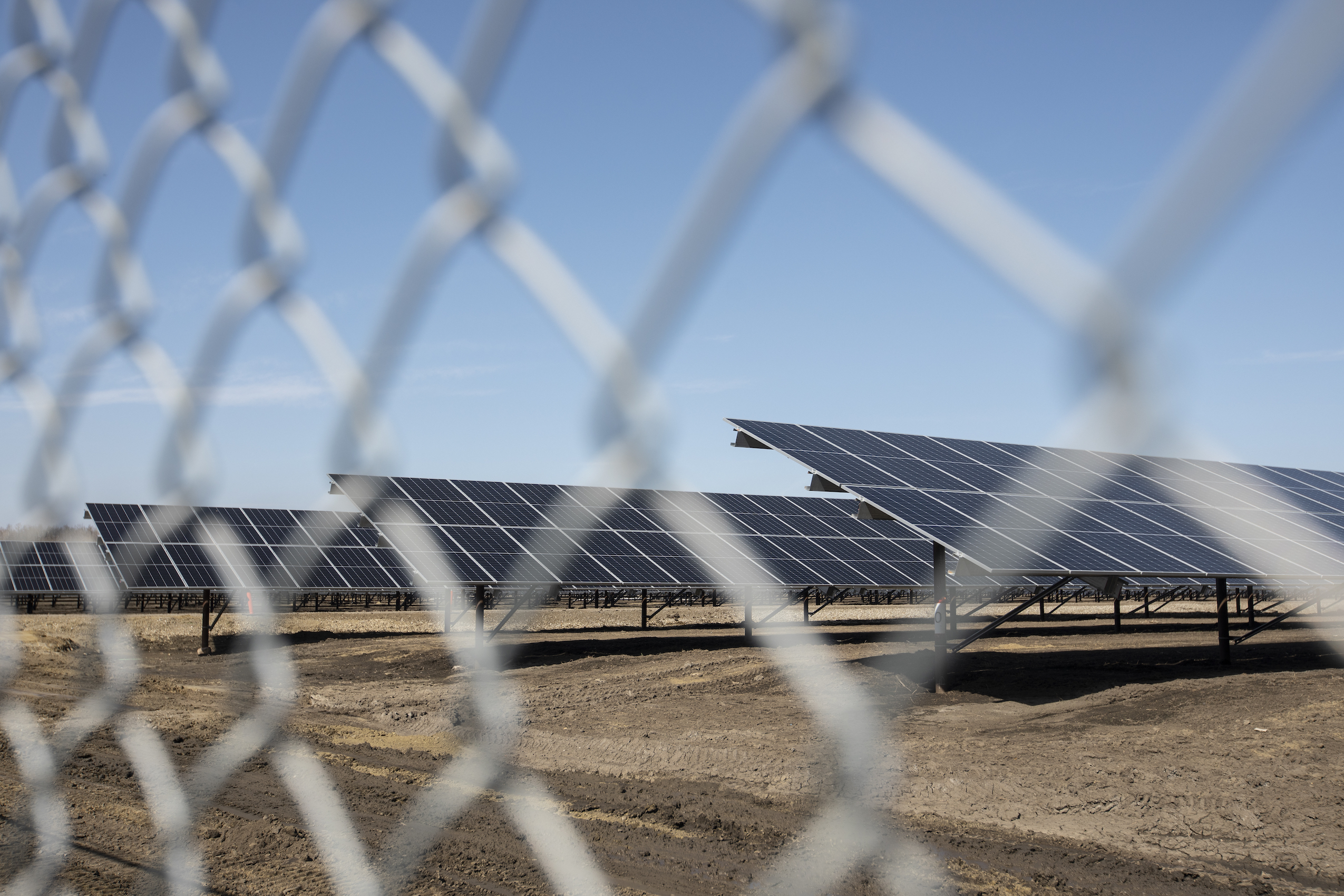
Farmer pointed to legislation passed this spring which she said enabled energy storage, allowed more companies to generate their own electricity and helped enable a distribution system for electric vehicles and renewable power sources.
But there are headwinds when it comes to maintaining Alberta’s current momentum.
When asked about whether Alberta would hit the 2030 target, Sara Hastings-Simon, the director of the sustainable energy program at the University of Calgary, is optimistic the province is now on the right track. “If we had been having this conversation a year ago, or a year and a bit ago, I think the answer would have been very different,” she says.
“I think that is not necessarily because of anything that the government or the [Alberta Electric System Operator] has been doing in the last year, but more in spite of it.”
Hastings-Simon is quick to point out carbon pricing remains a significant policy tool in Alberta’s arsenal, but she’s concerned Alberta’s early momentum could fizzle and the province could struggle to reach its next target — the federal goal of a net-zero grid by 2035.
That first 30 per cent, she says, was the low-hanging fruit.
“I do worry that at some point, we’re going to hit a wall,” she says, expressing concerns about the ability of renewable projects to connect to the grid and actually feed electricity to the province. Renewable electricity sources like wind and solar are often far away from urban centres where electricity demands are high but transmission lines are expensive, time consuming and can be controversial.
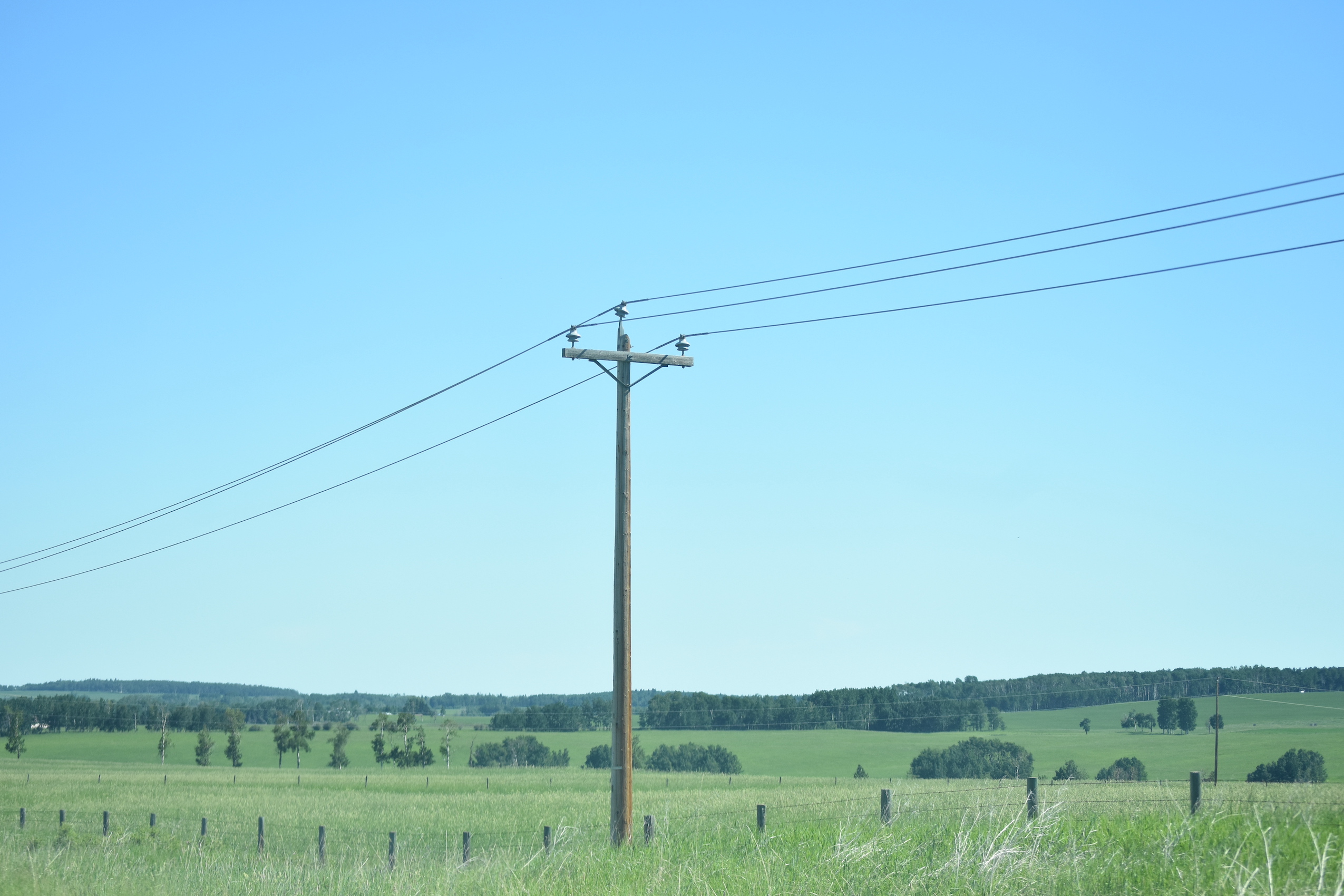
Hastings-Simon isn’t the only one looking at transmission capacity in the province. Both Wilson and Jeyakumar point to the need for increased investments in transmission so that renewables can actually feed into the system, or to share renewable power between neighbouring provinces and states.
Renewable energy experts also point to the need to reduce demand — from energy efficiency and beyond — and to create policies and pathways to increase electricity storage in the province.
“I think one of the things that we have to keep our eye on here is the Inflation Reduction Act in the U.S.,” Wilson says, in reference to the recent announcement that includes almost $400 billion U.S. in energy and climate spending.
He points to generous funding for renewable energy, long timelines and investments in the transmission system as elements of the program that could siphon investor interest away from Alberta.
“Canada was in the lead in the decarbonization race until this summer, because we had carbon pricing — which was great for the sector — we had a commitment to a net-zero grid by 2035, [and] you did have about $15 billion … earmarked for decarbonization in Canada,” he says, referencing funding in Canada’s Budget 2022.
“So everybody was paying attention to Canada, and Alberta especially, up until the summer, and then suddenly the [Inflation Reduction Act] drops and it’s a game changer.”
Wilson, however, is optimistic. And he says the federal government has acknowledged that competitive risk. He’ll be watching what happens in next year’s budget to help Alberta, and Canada, remain attractive to investors.
The headwinds bearing down on the province likely aren’t strong enough to knock Alberta off its trajectory towards 30 per cent renewable electricity generation by 2030, but without more work, the current momentum is unlikely to take Alberta towards a net-zero and, eventually, a fully decarbonized grid.
Natural gas is still the biggest generator of electricity and will require carbon capture and storage for those emissions to be removed.
“I think my major recommendation is for Alberta to have a made-in-Alberta net-zero grid by 2035 plan that includes policies, investments in infrastructure and technologies like storage, and updating of regulations and rules,” Jeyakumar says.
“We need to change it from a tone of ‘this is being done to us,’ to a tone that has more agency.”
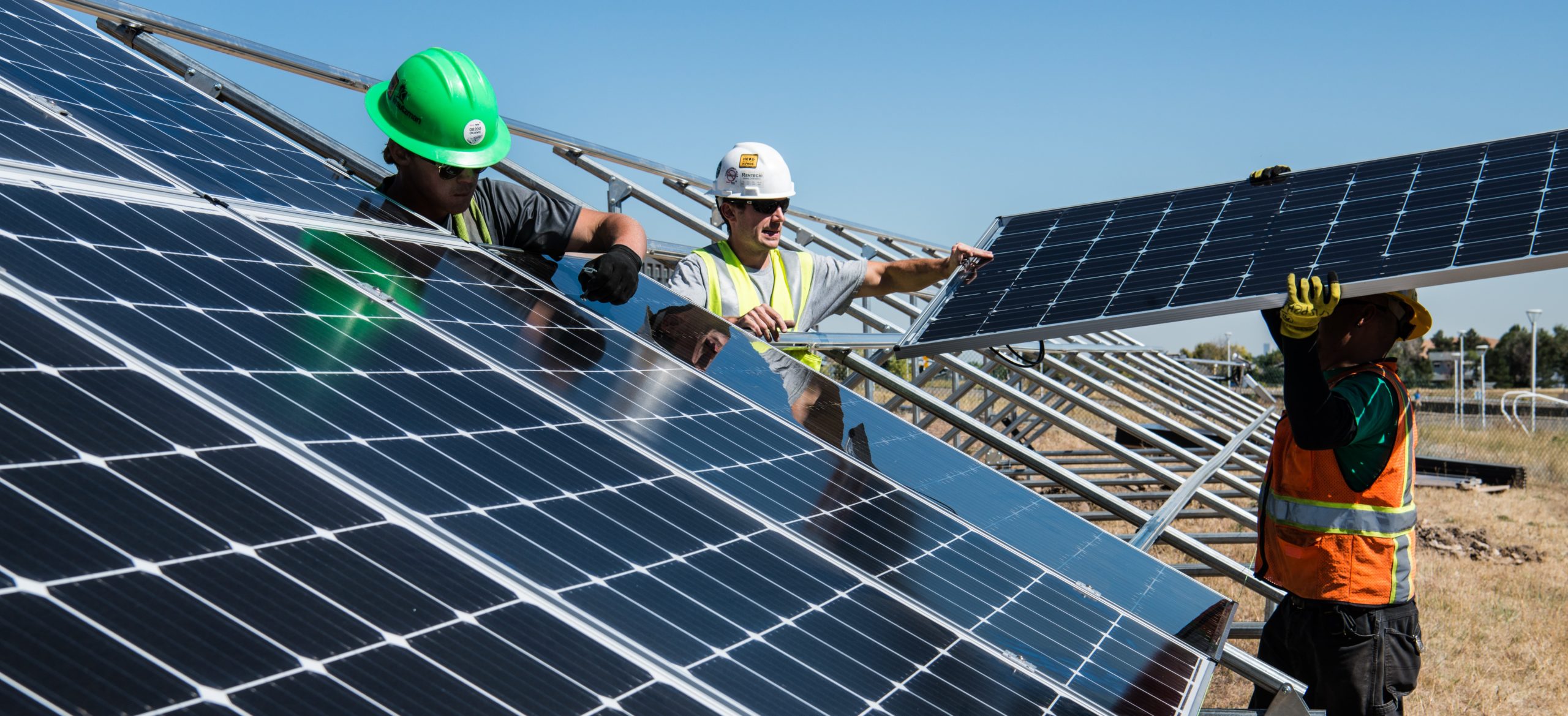
Hastings-Simon sees a place for the federal government to step in and provide funding for transmission infrastructure in the province, particularly in light of its goal for a net-zero grid that puts a significantly higher burden on Alberta and its historically high-emissions system.
Despite some of the challenges, she points to Alberta’s recent history as an indication of just how quickly things can change and how what once seemed impossible — phasing out coal generation by 2030, for example — can quickly become an easily surpassable target.
But it will require a system and a government that is ready for rapid shifts.
“We did see change happen in ways that people thought really wasn’t possible. And so we should keep that in mind when we think about what’s next, especially when we’re thinking about the next 10, 20, 30 per cent — what that might look like and how quickly that could go.”
Updated on Dec. 7, 2022, at 9:55 a.m. MT: This story was updated to correct Binnu Jeyakumar’s title. She is the electricity program director for the Pembina Institute, not the Business Renewables Centre (the Business Renewables Centre is an initiative of the Pembina Institute).
Get the inside scoop on The Narwhal’s environment and climate reporting by signing up for our free newsletter. On a warm September evening nearly 15...
Continue reading
How can we limit damage from disasters like the 2024 Toronto floods? In this explainer...

From disappearing ice roads to reappearing buffalo, our stories explained the wonder and challenges of...

Sitting at the crossroads of journalism and code, we’ve found our perfect match: someone who...
